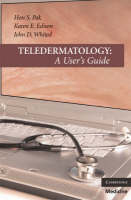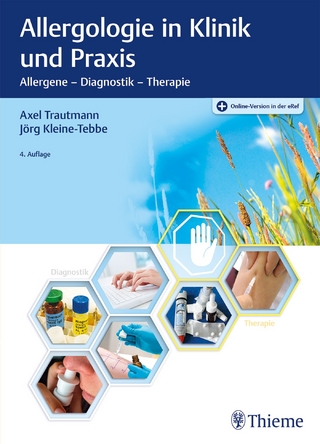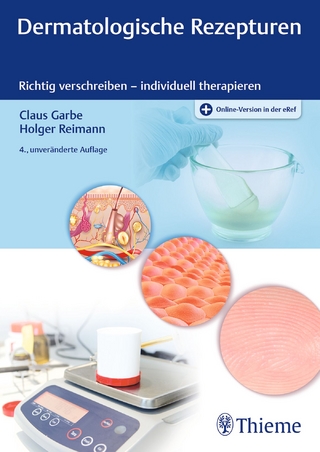
Teledermatology
Cambridge University Press (Verlag)
978-0-521-68335-7 (ISBN)
Dr. Hon S. Pak is Director of Advanced Information Technology Group for the US Army's Telemedicine and Advanced Technology Research Center (TATRC) at Fort Detrick, MD. He is responsible for integrating advanced healthcare information technologies into the military healthcare system, and he oversees the R&D arm of Military Healthcare System's CIO office. Prior to this assignment, he served at Wilford Hall Air Force Medical Center as chief of dermatologic surgery and at Brooke Army Medical Center as the associate program director of the combined Army-Air Force SAUSHEC Dermatology Residency, and chief of teledermatology of Great Plains Regional Medical Command. Since 2000, he has served as the Army Surgeon General's Consultant for Teledermatology, and is internationally recognized as a leader and innovator in the field of telemedicine. In addition, he is the president of the Association of Military Dermatologists and president of the American Telemedicine Association and Chair of their Standards and Guideline Committee. Dr. Karen E. Edison is a seasoned clinician with extensive experience in caring for patients at distant sites via telehealth. She received her medical degree and completed her residency in dermatology at the University of Missouri in Columbia where she joined the faculty in 1993. She served as Robert Wood Johnson Health Policy Fellow and then majority health policy staff for the Health Education Labor and Pensions (HELP) Committee in the United States Senate from 1999-2001, where she was highly instrumental in the legislative expansion of Medicare reimbursement for telehealth services. She returned to Missouri in 2001, where her current titles include Philip C. Anderson Professor and Chairman of the Department of Dermatology, Medical Director of the Missouri Telehealth Network, and Co-Director of the Center for Health Policy at the University of Missouri in Columbia. Dr. John D. Whited is a Research Associate with the Health Services Research and Development Service with the Department of Veterans Affairs and an Assistant Professor of Medicine at the Duke University Medical Center in Durham, North Carolina, USA. Dr. Whited received his medical degree from the West Virginia University School of Medicine and a Master of Health Sciences from the Duke University School of Medicine. He completed a residency in Internal Medicine at The Ohio State University Hospitals and a research fellowship in General Internal Medicine and Ambulatory Care at the Duke University Medical Center and the Veterans Affairs Medical Center in Durham, North Carolina. Dr. Whited pursues an active clinical research agenda focusing almost exclusively on telemedicine. He is considered one of the world's experts on teledermatology research with several published studies that include assessments of diagnostic reliability and accuracy, clinical outcomes, and economic analyses.
1. Introduction Hon Pak, Karen Edison and John Whited; 2. Teledermatology modalities John Whited, Hon Pak and Karen Edison; 3. Utilization survey Anne Burdick and Shasa Hu; 4. Review of literature John Whited; 5. Policies, barriers, and other issues to consider Joe Kvedar, Karen Rheuban and Karen Edison; 6. Business models Hon Pak, Marc Goldyne and Gail Barker; 7. Reimbursement models Karen Edison and Hon Pak; 8. Steps to starting a new teledermatology program Joe Tracy, Karen Edison and Hon Pak; 9. Teledermatology's impact on ethics David Fleming; 10. Teledermatology in dermatology residency Anne Burdick, Kimberly A. Sackheim and Daniel Siegel; 11. Art of teledermatology Hon Pak and Karen Edison.
| Erscheint lt. Verlag | 10.3.2008 |
|---|---|
| Zusatzinfo | 1 Maps; 7 Halftones, unspecified; 17 Line drawings, unspecified |
| Verlagsort | Cambridge |
| Sprache | englisch |
| Maße | 152 x 229 mm |
| Gewicht | 280 g |
| Themenwelt | Medizin / Pharmazie ► Medizinische Fachgebiete ► Dermatologie |
| ISBN-10 | 0-521-68335-1 / 0521683351 |
| ISBN-13 | 978-0-521-68335-7 / 9780521683357 |
| Zustand | Neuware |
| Haben Sie eine Frage zum Produkt? |
aus dem Bereich


